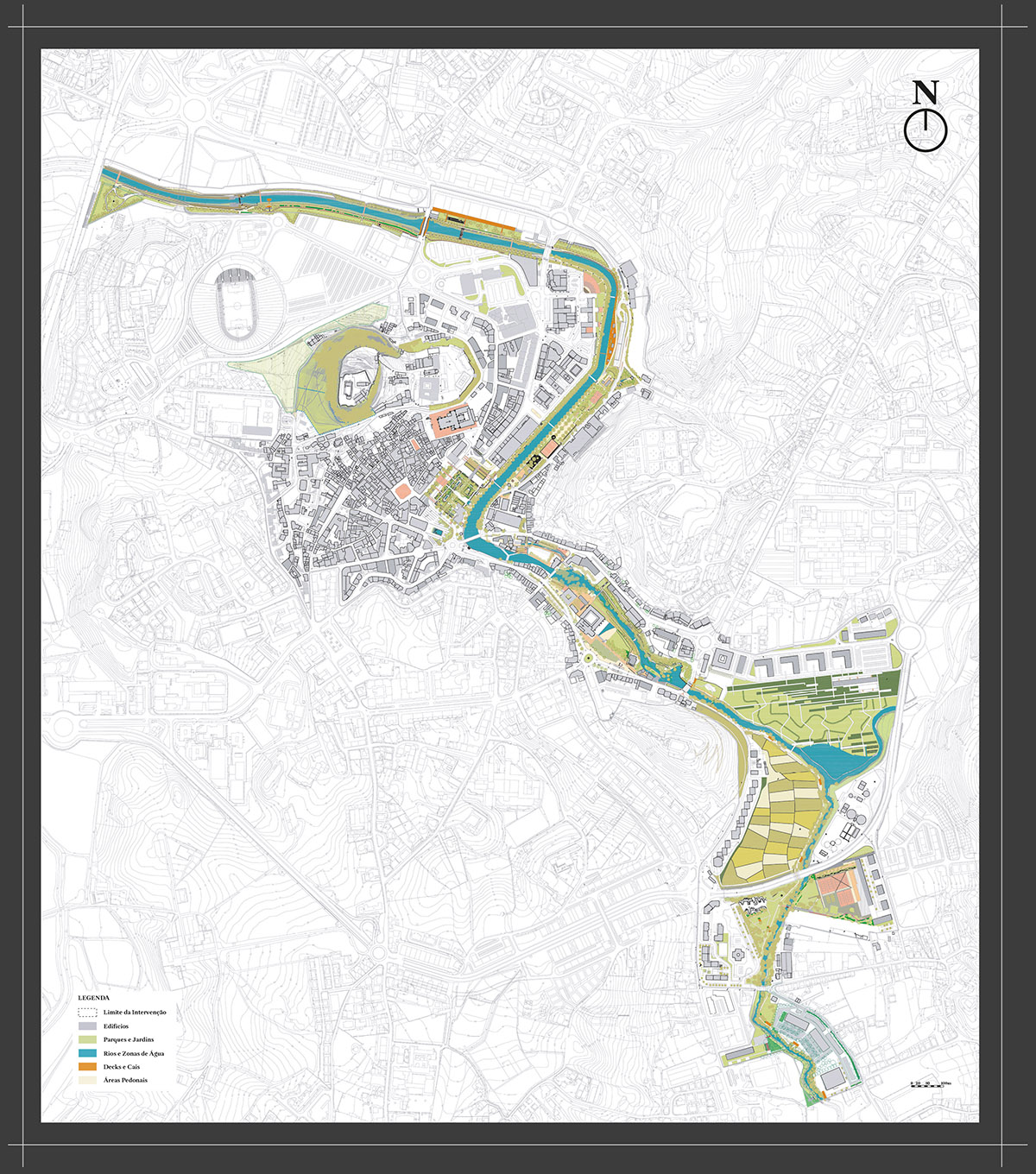The need to promote a qualitative transformation of the city was felt towards the end of the 20th century, thus leading to the initiatives taken locally to be included in the environmental programs that were being designed for the use of community funds nationwide. This is how the opportunity for Leiria to apply for its first experience in environmental and urban requalification comes up, integrating the Polis Program with the first ten cities. The result, even with all the project hardships, was one of crucial importance for the city of Leiria regarding public space improvement and the consequent improvement of the citizens’ quality of life, in such a way that today no one can imagine what it would be like to live in Leiria without the benefits this intervention has brought.
Parks and green areas: 17,8 acres
Common areas rehabilitation: 10,6 acres
Riverfront rehabilitation: 7.650 metres
Deterrent parking: 870 spaces
Pedestrian cycle paths: 12 kilometres
Pedestrian bridges: 9
Road and pedestrian bridges: 2
New support and replacement buildings: 10
Building rehabilitation: 1
Environmental Interpretation Centre: 1
Besides all the interventions made in the field, a strategic plan was developed during the following years that completed links and built up important points of interest and development of the city. The conversion of the Convent of Saint Augustine into the Leiria Museum and the conversion of the Church of Mercy into the Leiria Intercultural Dialogue Centre (CDIL) are two examples of this.





